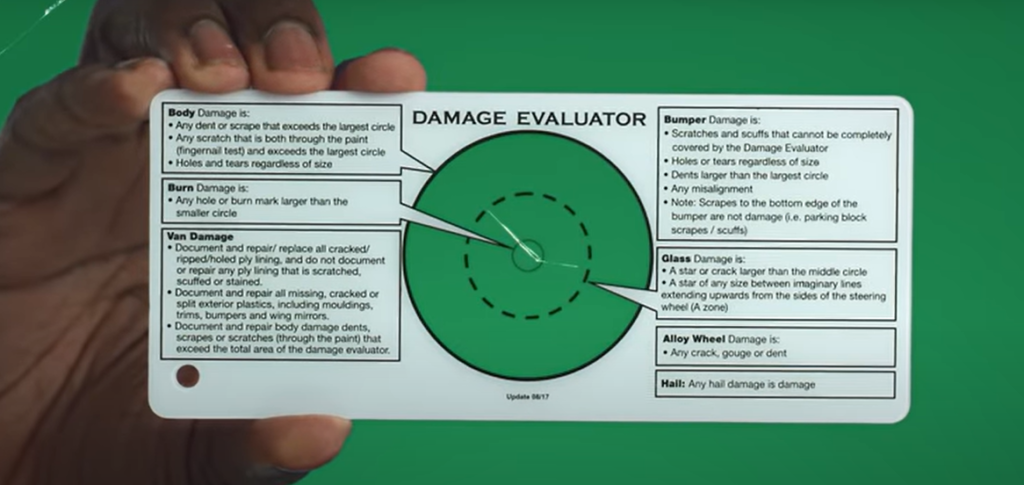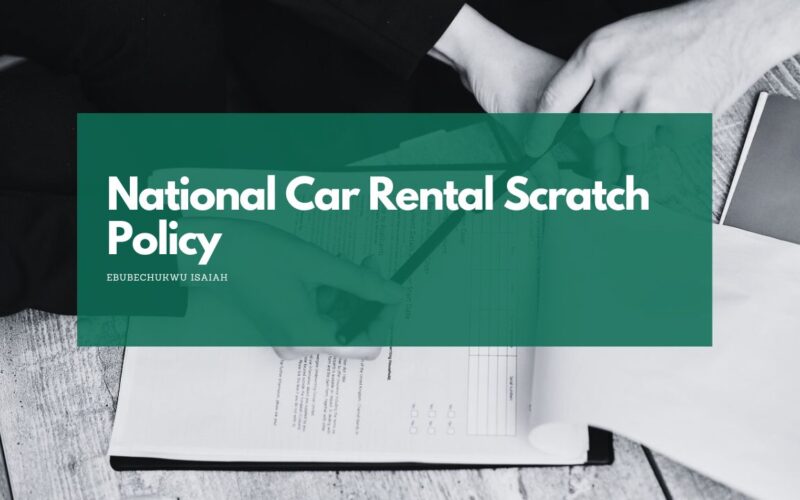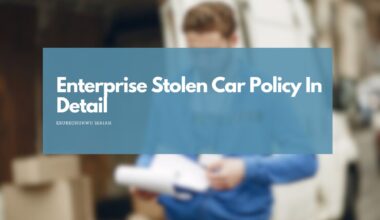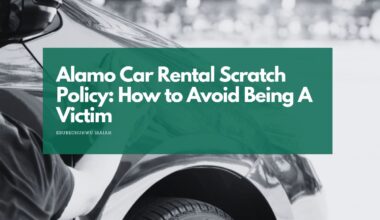As an Amazon Associate, I earn a small commission from qualifying purchases. Learn more about this.
Renting a car is a convenient solution for many of life’s situations, from getting to an important business meeting to making the most out of a vacation.
However, when you’re handed those keys, you’re also taking on a responsibility. Any damage that happens to the vehicle while it’s in your possession could end up costing you. And yes, that could include scratches.
Understanding National Car Rental Scratch Policy
The first thing you should know is that National Car Rental, like most reputable car rental companies, performs a thorough inspection before and after each rental period. You’ll often walk around the car with an employee to note any pre-existing damage.
You should point out any scratches or dents you see this time—no matter how minor they seem—so you won’t be held responsible for them later.
My personal advice is to always take pictures of them, preferably a video which would also show the inspector’s face, as a reference. Car rental companies can be fishy, you never can tell.
But what happens if you do incur a scratch while using the car?
Factors like the size and depth of the scratch, its location, and whether it’s part of a larger pattern of wear and tear can all affect whether or not you’ll be charged for it, just like most car rental companies.
Generally, the National scratch policy states that if a scratch is considered damage, the customer would be fined accordingly. On the other hand, If the scratch isn’t considered a damage, it’d fall under the normal wear and tear policy, which requires no charge.
National Car Rental follows its parent company, Enterprise, in determining what’s considered damage or a simple scratch (considered as normal wear and tear).
Enterprise uses a damage evaluator, a tool common with most car rental companies and other industries in general. This is basically used to determine the intensity of a damage based on a standard the company sets.
Enterprise’s own damage evaluator tool is used across National and Alamo, which are both its subsidiary companies.
Now, enough chatters. This is a snapshot of what the evaluator tool looks like:

The specifics of the evaluator tool addresses is basically divided into 4 sections:
Body Damage
Here, damage is defined as:
- A dent or scrape that is larger than the largest circle defined in the Damage Evaluator.
- A scratch that passes the “fingernail test” (meaning you can feel the scratch when you run your fingernail over it) and is larger than the largest circle.
- Holes and tears are counted as damage, regardless of their size.
- Any form of hail damage is considered to be damage.
- Any hole or burn mark that’s larger than the smaller circle defined in the Damage Evaluator.
Van Damage
- Cracked, ripped, or holed ply lining must be documented and either repaired or replaced.
- Missing, cracked, or split exterior plastics—including mouldings, trims, bumpers, and wing mirrors—also must be documented and repaired.
Bumper Damage
Here, a damage is defined as:
- Any scratches and scuffs that can’t be completely covered by the Damage Evaluator tool.
- Holes or tears of any size.
- Dents that are larger than the largest circle as defined by the Damage Evaluator.
- Note: Scrapes on the bottom edge of the bumper are not considered damage (e.g., those caused by parking blocks).
Glass Damage
Here, damage is defined as:
- A star or crack that is larger than the middle circle on the Damage Evaluator.
- Any star of any size that falls between imaginary lines extending upwards from the sides of the steering wheel is also considered damage.
Alloy Wheel Damage
Here, damage is defined as:
- Any damage including cracks, gouges, or dents.
5 Steps to Avoid Being a Victim of the National Scratch Policy
You’ve gotten the lowdown on National Car Rental’s Damage Evaluator tool and how they assess scratches and other damages.
But let’s face it, the goal is to return your rental car without any new scratches and avoid any additional charges. So, how can you be proactive about it?
Here are five concrete steps you can take to safeguard yourself.
1. Thorough Pre-Rental Inspection
Don’t rush through the initial vehicle inspection. Take your time to walk around the car and inspect it for any existing scratches, dents, or other damage.
Make sure everything is documented on the pre-rental condition report. Snap a few photos with your smartphone for your records.
This step is essential because it establishes a baseline for the car’s condition before you drive off the lot.
2. Understand Your Rental Agreement
Read through the terms and conditions of your rental agreement carefully, focusing especially on the sections that talk about vehicle damage and your liabilities.
Make sure you’re clear on what constitutes damage according to National’s Damage Evaluator tool, as that’s what will be used to assess any new scratches or other damage.
3. Opt for Additional Coverage Wisely
While optional, additional coverage can save you a lot of headaches if you find yourself in an unfortunate situation.
However, it’s crucial to understand what the coverage actually includes. Will it cover scratches, or just major damage?
If you’re using a third-party insurance provider, make sure their coverage aligns with National’s scratch policy.
4. Be Mindful Where You Park
Parking in risky locations increases the chances of your rental car getting scratched. Opt for well-lit areas, avoid tight spaces, and try to find spots that are less likely to put your vehicle in harm’s way.
It may seem like a small thing, but a little foresight can prevent scratches from neighboring cars, shopping carts, or other potential hazards.
5. Perform a Post-Rental Check
Before you return the car, do your own post-rental inspection. Compare the car’s condition to the photos you took during the pre-rental check. If you spot any new scratches, assess them based on what you know of National’s Damage Evaluator tool.
Knowing where you stand can better prepare you for the official post-rental inspection with the agent.
Conclusion
That wraps up our guide on how not to fall victim to National Car Rental’s scratch policy.
With the right information and a few precautionary steps, you can drive off the lot feeling secure, not just in your rental car, but also in the knowledge that you’ve done all you can to avoid unexpected extra costs.







